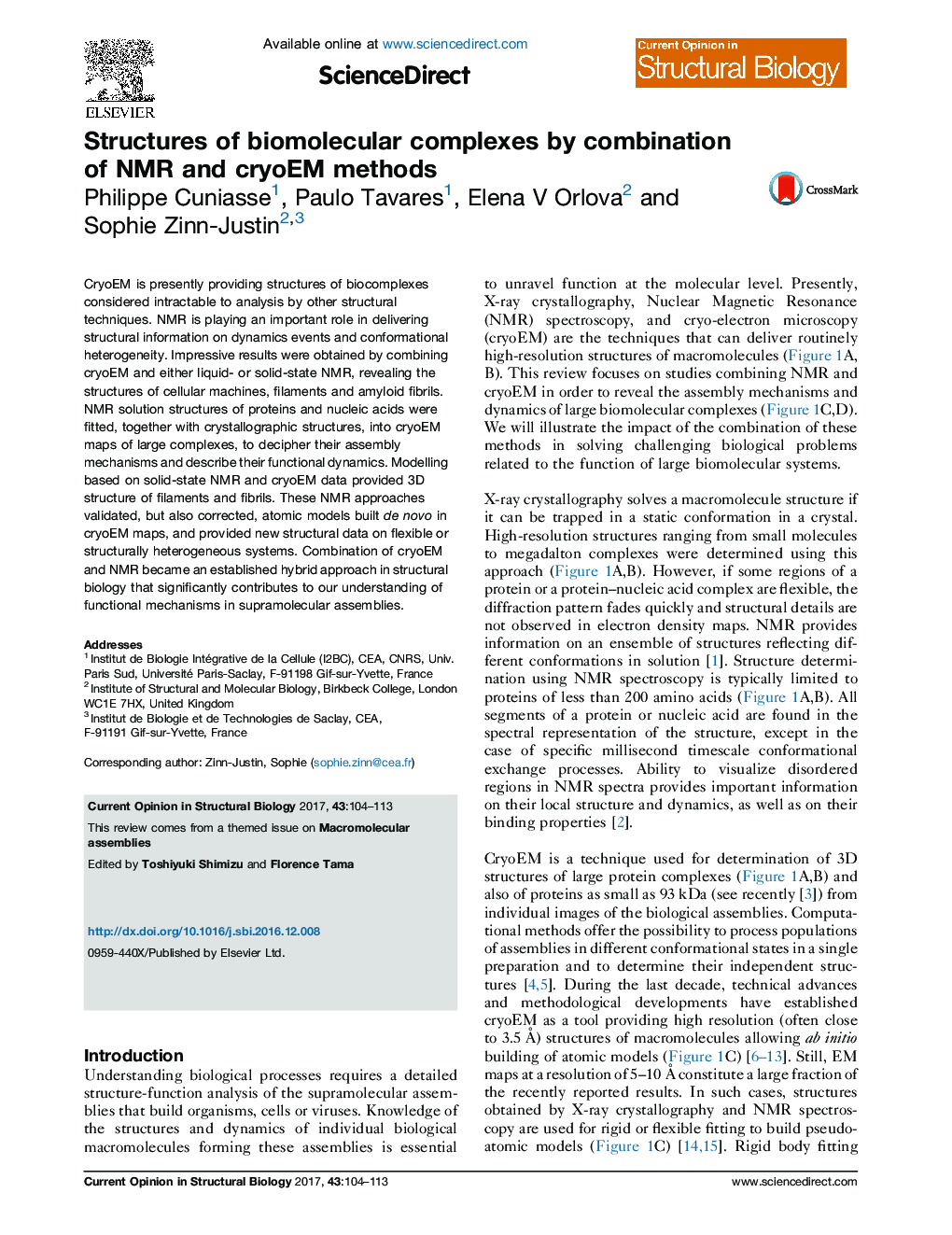| Article ID | Journal | Published Year | Pages | File Type |
|---|---|---|---|---|
| 5510789 | Current Opinion in Structural Biology | 2017 | 10 Pages |
Abstract
CryoEM is presently providing structures of biocomplexes considered intractable to analysis by other structural techniques. NMR is playing an important role in delivering structural information on dynamics events and conformational heterogeneity. Impressive results were obtained by combining cryoEM and either liquid- or solid-state NMR, revealing the structures of cellular machines, filaments and amyloid fibrils. NMR solution structures of proteins and nucleic acids were fitted, together with crystallographic structures, into cryoEM maps of large complexes, to decipher their assembly mechanisms and describe their functional dynamics. Modelling based on solid-state NMR and cryoEM data provided 3D structure of filaments and fibrils. These NMR approaches validated, but also corrected, atomic models built de novo in cryoEM maps, and provided new structural data on flexible or structurally heterogeneous systems. Combination of cryoEM and NMR became an established hybrid approach in structural biology that significantly contributes to our understanding of functional mechanisms in supramolecular assemblies.
Related Topics
Life Sciences
Biochemistry, Genetics and Molecular Biology
Biochemistry
Authors
Philippe Cuniasse, Paulo Tavares, Elena V Orlova, Sophie Zinn-Justin,
